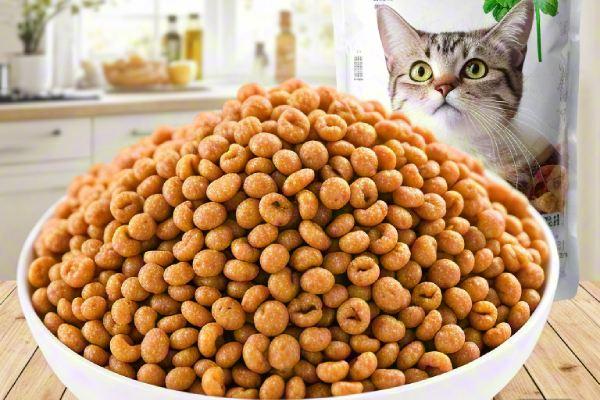Wet vs Dry Food for Cats: What’s the Best Choice?
Choosing the right food for your cat is one of the most important decisions you’ll make as a pet owner. Both wet and dry cat food have their pros and cons, and the best option depends on your cat’s health, lifestyle, and personal preferences. Here’s a breakdown to help you decide what’s best for your feline friend.

Wet Cat Food: Pros and Cons
✅ Pros:
-
Higher Moisture Content: Wet food typically contains 70-80% water, which supports hydration—especially important for cats that don’t drink much on their own.
-
Closer to a Natural Diet: It mimics the texture and moisture of prey, making it more biologically appropriate.
-
Easier to Chew: Ideal for older cats or those with dental issues.
-
Better Palatability: Most cats find it tastier and more aromatic.
❌ Cons:
-
Short Shelf Life: Must be refrigerated after opening and used within a day or two.
-
More Expensive: Generally costs more per serving than dry food.
-
Messier: Can be less convenient to serve and store.
Dry Cat Food: Pros and Cons
✅ Pros:
-
Convenient & Affordable: Easy to store, serve, and buy in bulk.
-
Long Shelf Life: Doesn’t spoil quickly once opened.
-
Good for Grazers: Can be left out during the day for free-feeding cats.
-
May Help with Dental Health: Crunching kibble can reduce plaque buildup (though not a replacement for dental care).
❌ Cons:
-
Low Moisture Content: Only about 10% water—can contribute to dehydration or urinary issues.
-
Higher in Carbohydrates: Some dry foods contain fillers that may not suit all cats, especially those with sensitivities or diabetes.
-
Overeating Risk: Free-feeding can lead to obesity if not portion-controlled.
What’s the Best Choice?
There’s no one-size-fits-all answer. Here’s how to choose:
-
For Hydration: Wet food is better.
-
For Budget and Convenience: Dry food wins.
-
For Picky Eaters: Wet food usually appeals more.
-
For Overweight Cats: Wet food often helps with portion control and satiety.
-
For Dental Support: Dry food may help slightly, but regular vet dental care is still essential.
The Best of Both Worlds?
Many veterinarians recommend a mixed feeding approach—offering both wet and dry food. This way, your cat gets the hydration benefits of wet food and the convenience and dental perks of dry food.
Final Thoughts
The best food for your cat depends on their individual needs, age, health, and your lifestyle. Always consult your veterinarian before making major changes to your cat’s diet. With the right balance, you can support your feline’s long-term health and happiness.
Disadvantages of Wet Cat Food
While wet cat food offers benefits like higher moisture content and palatability, it also has several drawbacks that pet owners should consider:
1. Higher Cost
Wet cat food is generally more expensive per serving than dry kibble. Its packaging, higher water content, and shorter shelf life contribute to the increased cost, making it a less economical choice for long-term feeding, especially in multi-cat households.
2. Shorter Shelf Life & Storage Challenges
Once opened, wet food must be refrigerated and consumed within 24–48 hours to avoid spoilage. Unopened cans or pouches also have a shorter shelf life compared to dry food. Improper storage can lead to bacterial growth, posing health risks to cats.
3. Dental Health Concerns
Wet food lacks the abrasive texture of dry kibble, which helps mechanically clean teeth. Over time, a diet exclusively of wet food may contribute to plaque buildup, tartar formation, and dental diseases like gingivitis. Regular dental care (e.g., brushing or dental treats) becomes essential.
4. Messiness and Convenience
Wet food can be messy to serve, particularly with fussy eaters who may leave residue in bowls. It also requires immediate cleanup to avoid odors or attracting pests. For busy pet owners, the need for refrigeration and portioning makes it less convenient than dry food.
5. Potential for Nutritional Imbalance
Not all wet foods are nutritionally complete. Some budget-friendly options may lack essential vitamins, minerals, or protein quality. Always check for an AAFCO (Association of American Feed Control Officials) statement on the label to ensure it meets feline dietary requirements.
6. Risk of Overfeeding
Wet food is calorie-dense but often served in larger portions, which can lead to overfeeding and weight gain if portions aren’t carefully measured. Obesity-related issues, such as diabetes or joint problems, may arise without proper portion control.
7. Environmental Impact
The production and disposal of single-use cans, pouches, or trays contribute to plastic and metal waste. Eco-conscious owners may prefer dry food with recyclable packaging or bulk-buying options.
8. Pickiness and Food Transition Issues
Cats fed exclusively wet food may develop a preference for its texture and aroma, refusing to eat dry food or other formulations. This can complicate transitions during travel, emergencies, or dietary changes.
Mitigating the Drawbacks:
-
Combine Wet and Dry Food: Use wet food as a supplement to a balanced dry diet for hydration and variety.
-
Prioritize Dental Care: Schedule regular vet dental checkups and introduce teeth-cleaning routines.
-
Choose High-Quality Brands: Opt for wet foods with high protein content, minimal fillers, and AAFCO certification.
-
Practice Portion Control: Follow feeding guidelines based on your cat’s weight and activity level.
Conclusion
Wet cat food is a valuable option for hydration and palatability but requires careful management to address its downsides. Consult your veterinarian to tailor a diet that balances your cat’s health needs, lifestyle, and budget.